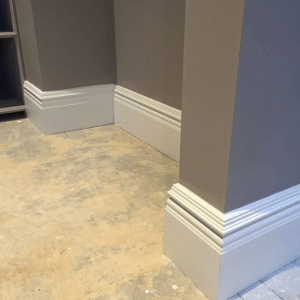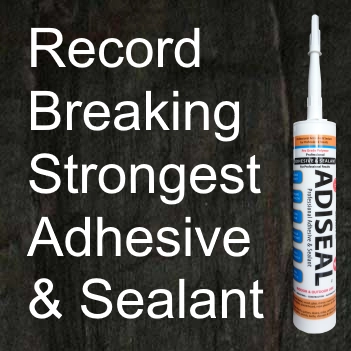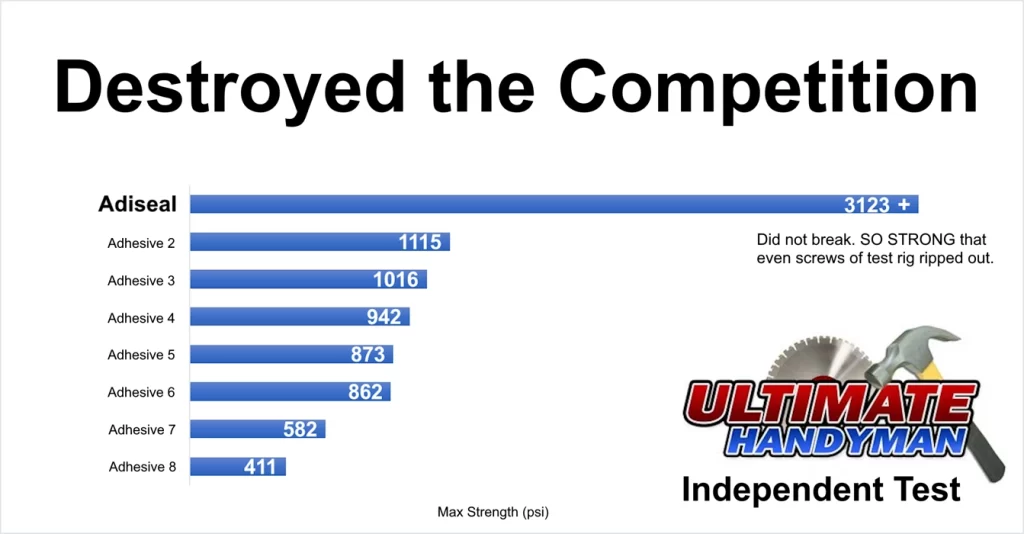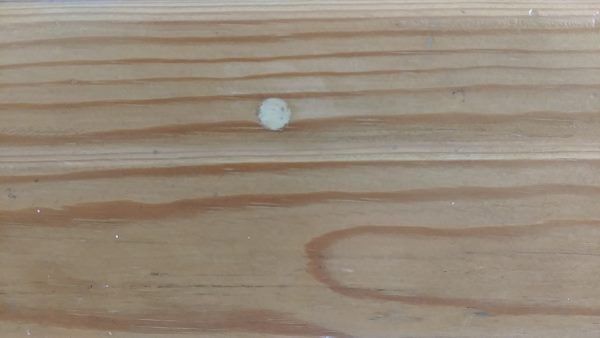Skirting Board Adhesive
Skirting Board Adhesive: Adiseal Strong Flexible Bond
What is the best skirting board adhesive?
When it comes to attaching skirting board to plaster wall, Adiseal adhesive sealant is great skirting board adhesive. Renowned for its exceptional performance, it has broken records and surpassed expectations. Choosing a strong and flexible adhesive is crucial to achieve a durable bond that withstands the test of time. In this guide, we will explore the process of how to attach skirting board to a wall using an adhesive, as well as discuss the advantages and disadvantages of using adhesives instead of mechanical methods for skirting installation.
Surface preparation
When trying to glue skirting boards or other materials, the strength of any adhesive is determined by the weakest surface it is applied to. If the surface is dusty, the adhesive bond strength will only be as strong as the dust particles adhered to it. Before attempting to a attaching skirting boards with an adhesive, taking the time to thoroughly clean both the walls and skirting boards from dust, grease, paint, and other dirt is essential for achieving a strong and durable bond. Additionally, if the wall is uneven, it is advisable to flatten it as much as possible before using an adhesive with high gap fill capabilities. Adisolve is an excellent product to assist in removing stubborn deposits such as oil, grease, and tar, ensuring optimal surface preparation for a reliable bond.
Flexible Adhesive
If a non-flexible adhesive is used to glue skirting boards to plaster walls or other materials, it can become brittle. Over time, this brittleness can cause the bond to weaken and eventually break, especially when the wood expands or contracts due to changes in temperature and moisture. Additionally, the adhesive must be able to absorb vibrations caused by various factors, such as people walking, touching the skirting boards, and even vehicle traffic if the property is located near a road. Therefore, it is crucial to choose a flexible adhesive that can withstand these dynamic forces and maintain a strong and durable bond between the skirting boards and the wall. As Adiseal is a waterproof adhesive as well, it can be used in areas where moisture is present.

High gap fill
It is crucial for any product to possess effective gap filling properties. This is necessary because, in most cases, the wall where the skirting board is applied is not completely flat. Typically, plasterers do not extend the plaster on the wall all the way down to the floor, resulting in uneven gaps between the skirting and the wall. Therefore, the product must have the ability to fill these gaps adequately. Additionally, the adhesive should maintain its position and not run down during the drying process, ensuring a secure bond between the skirting board and the wall.
How to attach skirting board to a wall
How to stick skirting board to a wall using adhesive.
- Prepare the surface
Ensure that both the wall and the back of the skirting boards are clean, dry, and free from dust, grease, or any other contaminants. Use a clean cloth to remove any dirt or residue.
- Measure and cut
Measure the wall length and mark the skirting board accordingly. Cut it accurately with a saw, ensuring precise corners and miters. Allow the wood to acclimate to the room’s conditions before cutting to account for expansion and contraction.
- Apply the adhesive
Choose a strong adhesive and apply a continuous bead along the back of the skirting board. For uneven areas, add extra adhesive to fill gaps between the board and the wall.
- Position and secure
Position the skirting board against the wall, aligning it with the markings. Press gently for proper adhesive contact, and use supports if needed until the adhesive dries.
- Finishing touches
Remove excess adhesive, smooth it with a putty knife, and fill any visible gaps or joints with gap filler or caulk for a neat finish.
- Allow for drying and curing
Allow the adhesive to dry and cure as per the manufacturer’s instructions, usually taking several hours. Avoid moving the skirting board during this time.
Tip: To store Adiseal once opened, leave about 1cm worth of product out of the nozzle and store the tube upright in a cool dry place. Adiseal requires moisture for it to cure. The exposed part out of the nozzle will cure creating a cap. To re-use Adiseal, pull the cured part out or cut the nozzle until the uncured part is reached.
Skirting board glue vs adhesive
When it comes to attaching skirting board to walls, using a skirting board adhesive is preferable to skirting board glue. An adhesive offers distinct advantages over skirting board glue in terms of its ability to fill gaps and provide flexibility. It possesses superior gap-filling properties, allowing it to compensate for uneven surfaces and create a stronger bond between the skirting board and the wall. Additionally, skirting board adhesive exhibits greater flexibility, enabling it to accommodate the natural movements of the skirting board and the wall due to temperature and moisture changes. Therefore, choosing an adhesive ensures a more reliable and durable attachment between the skirting board and the wall compared to skirting board glue.
Record breaking strongest adhesive and sealant proven by independent test

For more details on the best grab adhesive & sealant see the Adiseal page. It includes details of how Adiseal was the strongest adhesive in an independent adhesive strength test. In the wood to metal adhesive strength test, Adiseal was over 3 times stronger than the nearest competitor. It was even stronger than the screws holding the test rig down forcing the test on it to be stopped as the screws started ripping out.

Fitting skirting with an adhesive or mechanical fixings
When it comes to attaching skirting board to a wall, there are generally two primary methods. The first method involves using mechanical techniques, such as screws and wall plugs. However, one drawback of this approach is that the final result may not be as aesthetically pleasing as when using an adhesive. In the provided image, the skirting has been attached to the wall using screws and wall plugs. Although the resulting holes were filled with wood filler, as depicted in the image, the finish is not as seamless as it would be if drilling into the wooden skirting was avoided altogether.

Where to buy skirting board adhesive
In the UK, to buy skirting board adhesive, please contact us for details of your local stockist. Online seller www.guglue.com can ship to other countries. You can also contact us to find out if there is a distributor or a distribution opportunity for your country.
Colours
Adiseal adhesive and sealant is available in the following colours:
- White adhesive and white sealant
- Black adhesive and black sealant
- Grey adhesive and grey sealant
- Clear adhesive and clear sealant
- Brown adhesive and brown sealant
Adiseal can also be manufactured in any RAL colour.
Please note Adiseal adhesive sealant colours provide a stronger bond compared to the clear version.
Frequently Asked Questions About Skirting Board Adhesive
Yes, Adiseal adhesive will stick skirting boards to a wall and will provide a very strong and long lasting bond. The reason for this is because Adiseal is extremely strong yet stays flexible, absorbing any vibrations, knocks and expansion and contraction due to temperature and moisture changes in the air. It is also waterproof and UV resistant as well.
Both Adiseal adhesive sealant and Adiseal Hi-Grab adhesive will provide an extra strong long lasting, flexible bond on skirting. Adiseal adhesive and sealant is the recommended product if there is no requirement for extra high initial grab and there are no big gaps to fill between the wall and skirting boards.
The Adiseal colours have stronger initial grab and bond strength compared to Adiseal Ultra Clear. It is recommended to use Adiseal Colours over Adiseal Ultra Clear when it’s being used as an adhesive only.
Adiseal is the best skirting board adhesive. It stays flexible, has high grab, high gap fill and it was the strongest adhesive in an independent test. It is also waterproof and UV resistant as well.
Skirting board adhesive is a type of adhesive specifically designed for attaching skirting boards or baseboards to walls.
Skirting board adhesive is typically suitable for a variety of skirting board materials, such as wood, MDF (medium-density fiberboard), PVC, and others. However, it’s important to check the manufacturer’s instructions and recommendations for compatibility.
